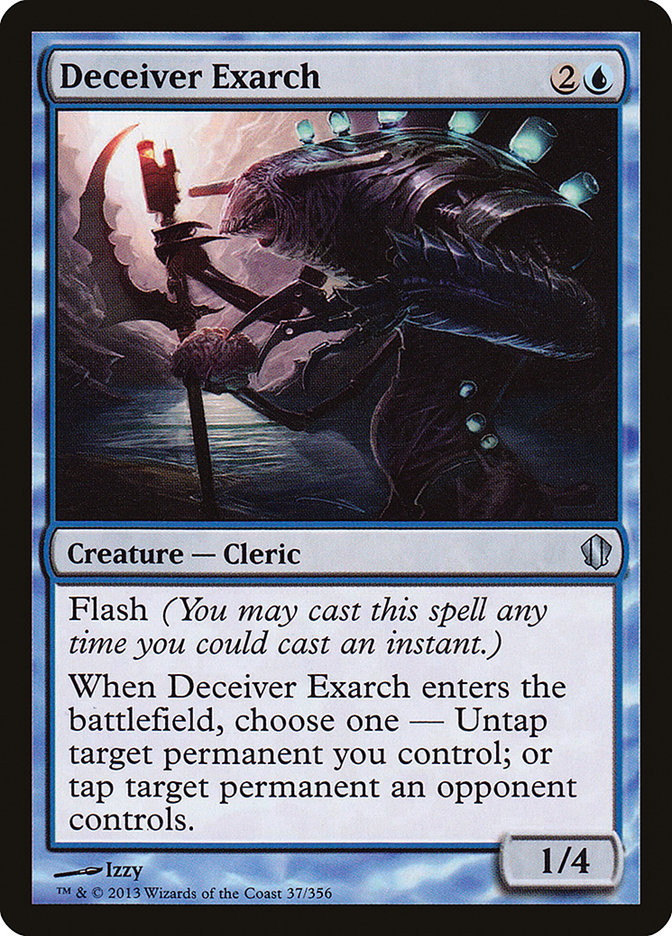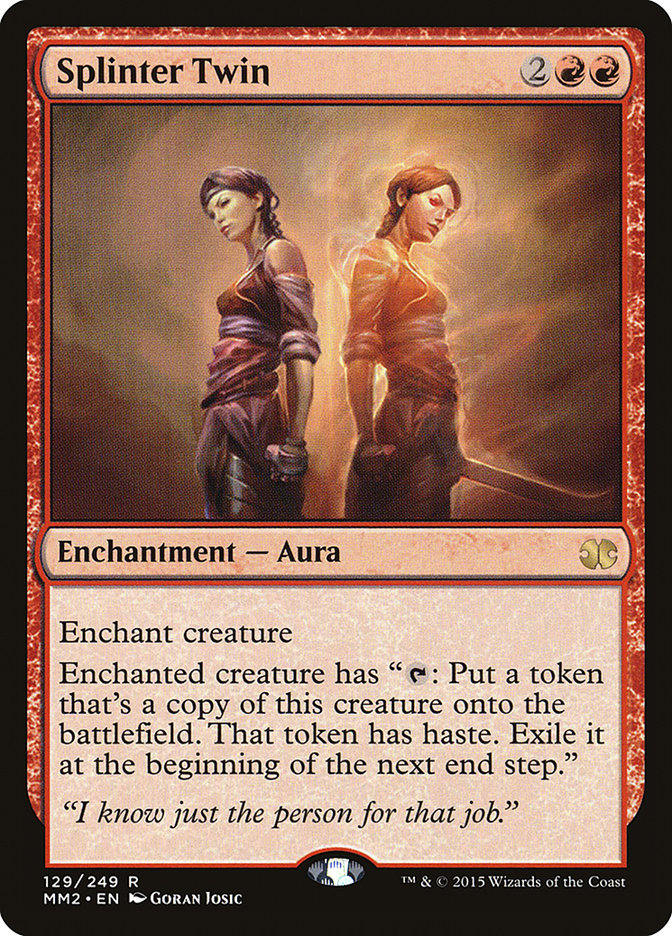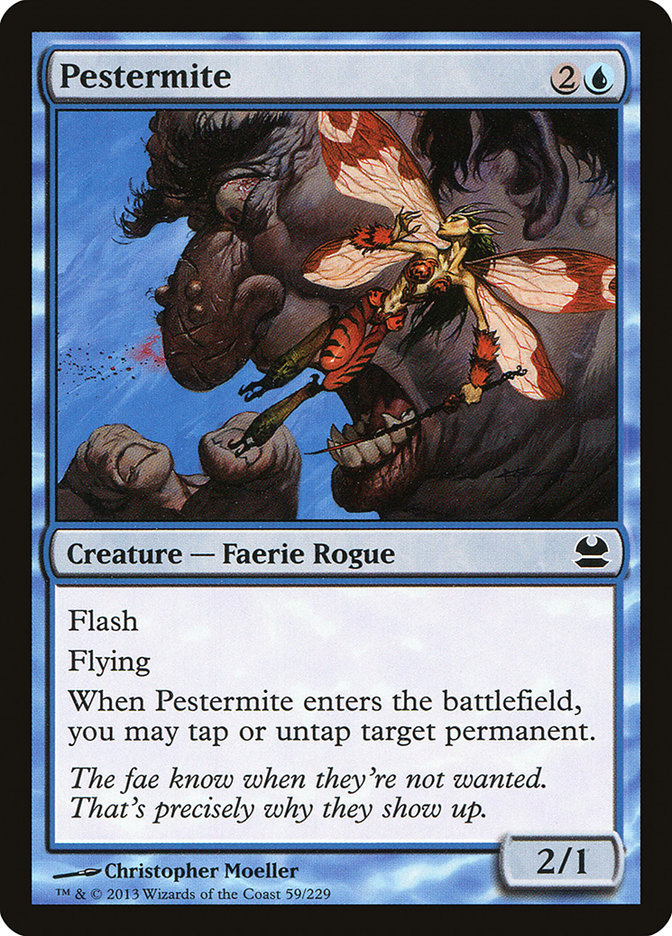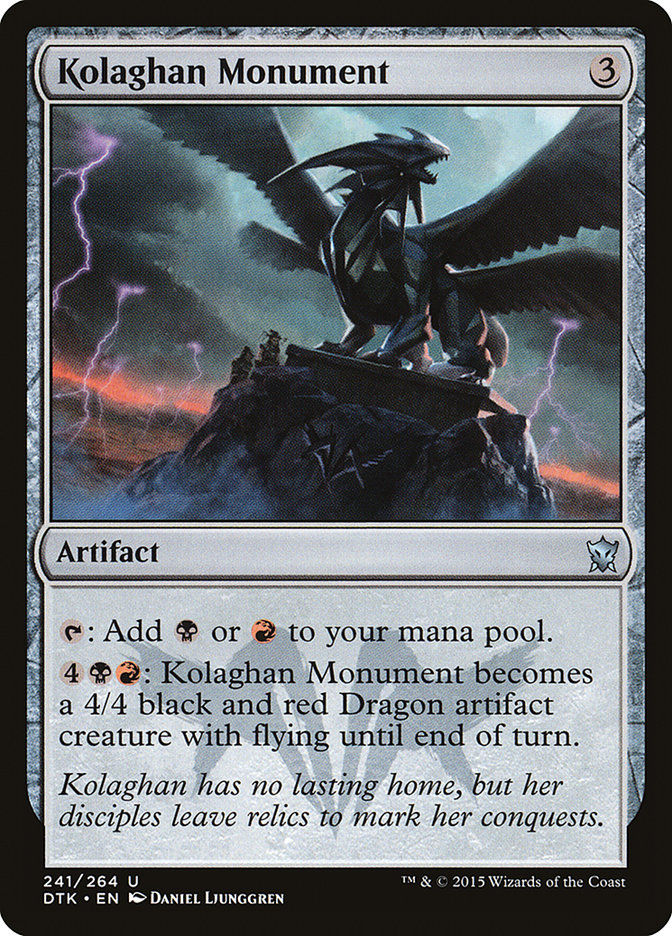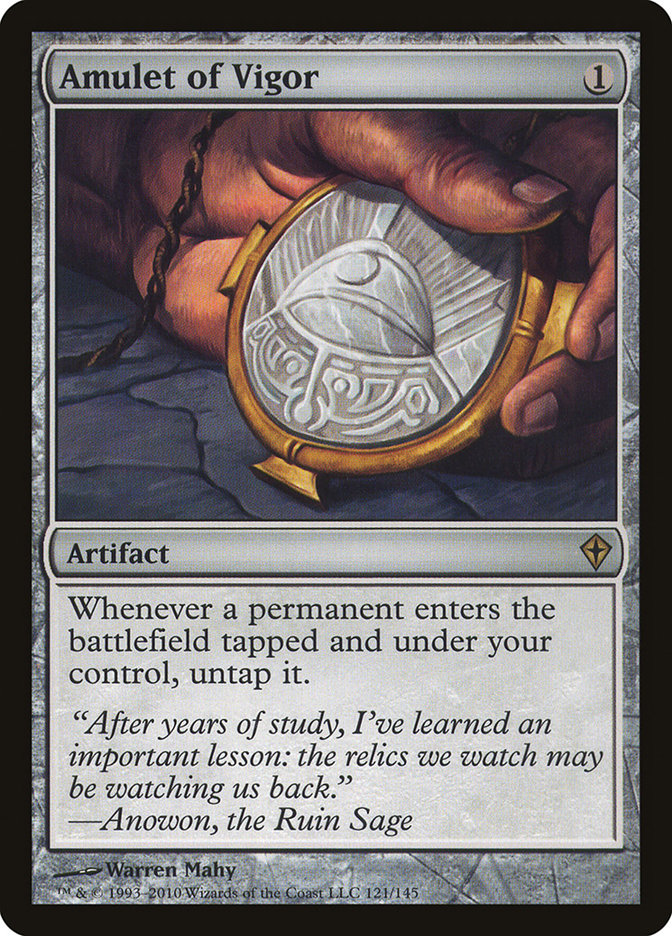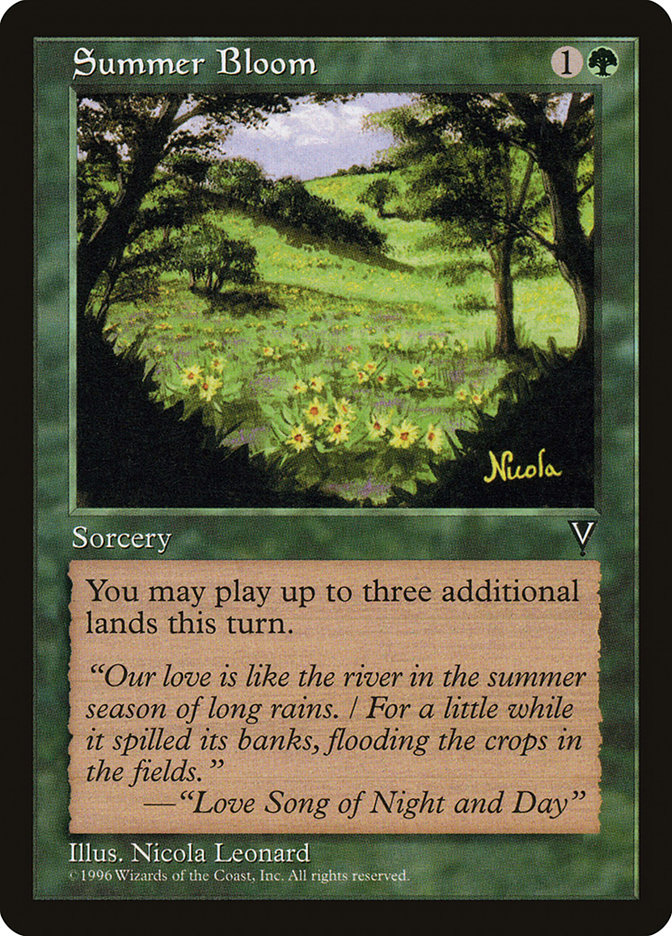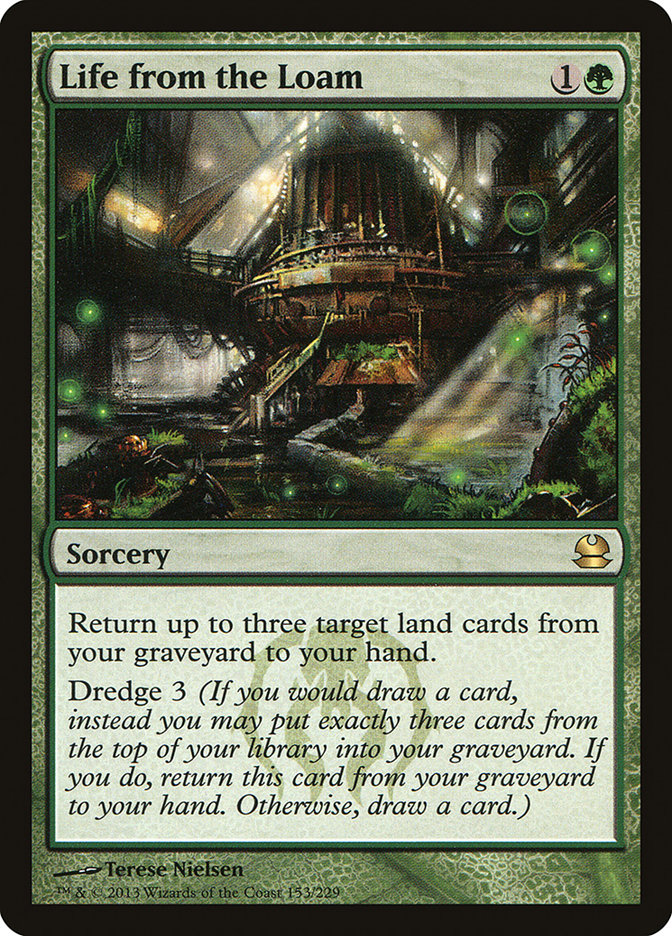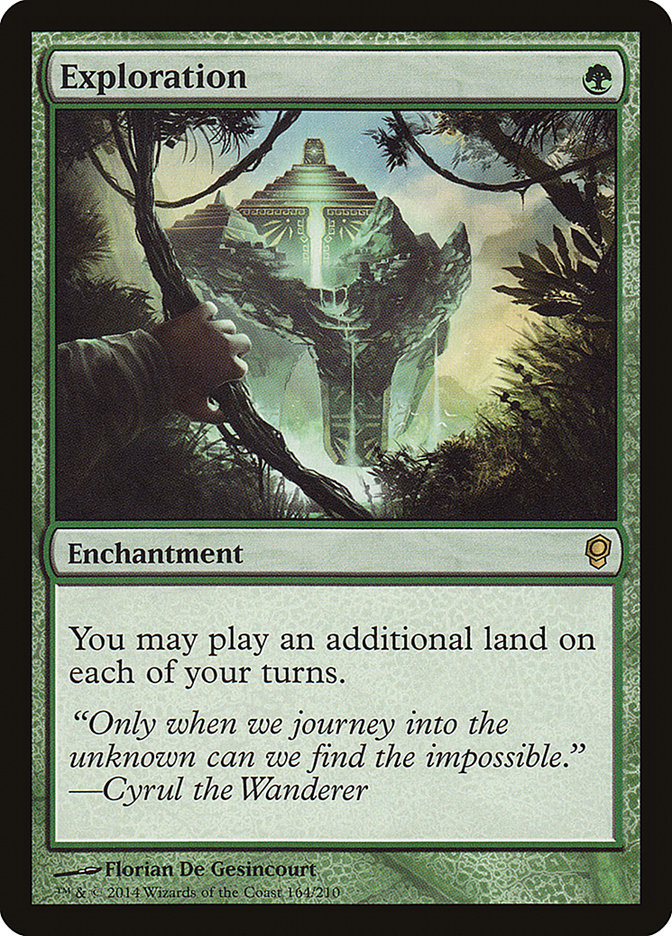CEDitors Note: Hello everyone, and welcome to another edition of Fact or Fiction! In this column, two Premium writers will answer five questions
provided by yours truly on Magic-related topics. At the end, you have the opportunity to vote on who won the head to head battle. This week, we have
Splinter Twin aficionado and the pride of Alabama, Todd Anderson, doing battle against the man they call Bard Narson for no real explainable reason,
Brad Nelson!
1.) Splinter Twin and its many variants is the deck to beat for the Modern portion of the Season Two Invitational.
Todd Anderson – Fiction:
Splinter Twin is probably the most consistent deck in the format, but I don’t think it is the deck to beat. It continues to put up solid numbers, but there
is a wide range of playable/powerful decks in Modern. Going into the event with only one deck in mind would be rather foolish, but forgetting Splinter Twin
exists would also be a mistake.
The thing about Modern is that the card pool is too big to focus on any one strategy. There could come a point where Splinter Twin is the main target, and
one of the only things you need to worry about, but I would be much more concerned with figuring out your bad matchups and trying to improve those. While
Splinter Twin is a combo deck, it is disrupted by very common cards played in the format. Discard spells, removal spells, and counterspells are all great
at fighting Splinter Twin decks, so don’t worry too much about it.
After all, if you put too much emphasis on the combo itself, then you’ll likely die to Snapcaster Mage and Lightning Bolts anyway.
Brad Nelson – Fiction:
Even though Splinter Twin variants have had long running success since the birth of Modern doesn’t mean that time is now. Kolaghan’s Command has shaken the
format up, causing the midrange decks to reign supreme. Splinter Twin once was able to still fight these decks using a well-tuned midrange sideboard
centered around Batterskull, but that’s just not the case anymore due to Kolaghan’s hatred towards artifacts.
What a hypocrite!
Even though the decks to beat will be Grixis Delver and Jund, that doesn’t mean players will abandon the beloved combo deck. We will see many talented
players bringing it to battle with innovative sideboards to combat the fair side of the field.
2.) Between Abzan, Jund, and B/G, Jund is the best Thoughtseize – Dark Confidant – Abrupt Decay deck in Modern.
Todd Anderson – Fact:
I think that Jund is the best Thoughtseize deck in Modern. Lightning Bolt is the best removal spell in the format, and the power level of Lingering Souls
and Siege Rhino steadily decrease as the format becomes more polarized. With so many strategies looking to find holes in the opponent’s gameplan, it
becomes difficult to rely on threats that can’t enter play or close the game quickly.
What Jund does is so much different than Abzan or B/G, though it doesn’t seem like it at first. Having red mana, and Lightning Bolt, gives you the best
shot at gaining control of the earlygame. Dark Confidant thrives when your other spells are cheap, and being forced to play Dismember or Path to Exile over
Lightning Bolt is pretty disgusting. If I were planning on playing a Thoughtseize deck at the Season Two Invitational, I would absolutely play Jund.
Brad Nelson – Fact:
Not only does Kolaghan’s Command push this deck over the edge, but players like Brian Braun-Duin won’t let go of Collected Company. Even though Collected
Company does its best Birthing Pod impression, it isn’t even close to powerful enough to compete in the format. Lightning Bolt is a necessity as long as
Elves and Abzan Company stay in the format.
Current Abzan versions are also currently geared to beat the mirror match by playing Siege Rhino, but this Standard staple is far too slow against the rest
of the field. Abzan decks should cut the four-drops and get lower to the ground to have a chance against these aggressive green decks.
3.) Due to how complicated it is to play, you expect Amulet Bloom to have very little representation at the Season Two Invitational.
Todd Anderson – Fact:
I expect there to be a reasonable amount of Amulet Bloom at the Season Two Invitational, but I don’t expect to play against it more than once out of the
eight rounds of Swiss. There are some difficult lines of play with the deck, but you can make plenty of mistakes and still win, which can be appealing to
people who are new to Modern. The strength of Amulet Bloom is not in its complexity, but in its explosiveness.
The weaknesses of Amulet Bloom are many, and some people may be too afraid to pilot it due to that fact. Cards like Blood Moon, Fulminator Mage, and even
Ghost Quarter give it a lot of trouble, and I would expect a lot of people to shy away from the archetype because those cards are seeing more and more play
(as a result of an increase in popularity of G/R Tron and Amulet Bloom). I don’t think that Amulet Bloom will be a major player throughout the weekend, but
I wouldn’t be surprised if a master of the archetype put up a great finish.
Like Legacy, Modern is a format where learning all of the interactions and lines of play with your deck is important. Some of those lines are too complex
to see on first glance, so a novice playing Amulet Bloom could very easily miss a route to victory. That could push people away from the archetype, but I
assume that the players who love Amulet Bloom will continue to play it, regardless of how hostile the environment might be.
Brad Nelson –
Fiction:
I believe the deck won’t see much play at the Season Two Invitational, but not due to how complex it is. I’m under the impression that this deck is not
only difficult to play, but doesn’t even give the pilot any benefit for playing such a complex deck. The deck is merely okay, but people fall in love with
it due to its complexities. Magic is difficult, and lines are missed all the time. It’s just easier to see them with a deck that completely plays solitaire
with their opponent.
4.) Given its performance over the first half of this 2015, Lands is a tier one deck in Legacy.
Todd Anderson – Fact:
Lands has always been my kryptonite. I don’t like playing against Lands when I’m playing a fair deck, as those are the archetypes that it can prey on. It
isn’t difficult to lock up a game with recurring Wastelands, or making 20/20 Gerry Thompson tokens every turn. If the format continues to be full of
Delver, and other fair blue decks in general, I expect Lands to be one of the best options for a Legacy event.
While Lands is great against fair decks in Legacy, it isn’t so spectacular against combo decks. They have very few ways to interact with someone playing
Storm, Show and Tell, and a number of other strategies that go way over the top, and are much too fast. Life from the Loam is the blood of Lands, and being
able to dredge a few times is how the deck wins the long game. With a fast combo deck taking away that strength, it seems improbable that Lands could
flourish, but we’ve all seen the results from the Legacy events over the past few months.
Lands will continue to be a major player in Legacy as long as fair blue decks remain popular.
Brad Nelson – Fiction:
In my opinion, a deck must be able to have a high win percentage when being targeted by hate to be considered tier one. Lands is simply a deck that preys
on the metagame from time to time. If people wanted to beat Lands, they could. This doesn’t always hold true for the true tier one decks in the metagame
like Delver, Miracles, and Storm. Again, Magic is difficult, and it is sometimes easier to play the deck that beats the decks to beat. However, that
doesn’t make a deck the best one.

5.) Like Pascal Maynard during the top 8 of GP Las Vegas, you would have selected the foil Tarmogoyf over Burst Lightning.
Todd Anderson – Fact:
As long as the payouts for Grand Prix continue to be so low, I see no reason not to take a card worth so much money, regardless of how high the pressure in
the given situation. While not taking Burst Lightning over the foil Tarmogoyf decreases your overall chances of winning by a few percentage points, I’m not
sure those percentage points are worth more than the $350 price tag. Add to that the nostalgic value from taking such an iconic card, since opening a foil
Tarmogoyf is basically the whole point of having it in the set, and I think the choice is pretty easy.
For Pascal Maynard, the Pro Points associated with advancing farther in the tournament might have been more valuable, but where do you draw the line? What
if he took the Tarmogoyf over some mediocre creature, or a powerful sideboard card? At some point, you have to understand that the current system that we
all participate in is what caused this issue in the first place. Grand Prix payouts are so paltry compared to the number of players who enter, as well as
compared to other games with similar tournament attendance. Each year, the price of Grand Prix rise while the prize payout stays mostly the same.
There have been steps to increase the prize payout based on attendance, and that is a positive step forward, but we’re still battling for pennies on the
dollar compared to our entry fee, which is not acceptable. Had first place prize at this tournament been $20,000, or even $10,000, do you think Pascal
would have taken the Tarmogoyf?
No one batted an eye when Fujita drafted Pithing Needle in the Top 8 of Pro Tour Saviors of Kamigawa, because he is known to be eccentric. Pascal is cut
from the same cloth, and I, for one, can appreciate that.
Brad Nelson – Fiction:
I am a terrible drafter, and I would most likely not have made Day Two of the Grand Prix. I would probably be indulging in one of the amazing shows in Las
Vegas like Cirque de Soleil or playing Pai Gow with some friends around that time on Sunday. Since I would not be in that situation myself, I don’t believe
that I’m in any position to decide whether Pascal was correct to take the money or not. I guess I will just trust the actions of someone that was deserving
of being in that position to make the correct decision for themselves instead of projecting my own wants and needs on another individual.


